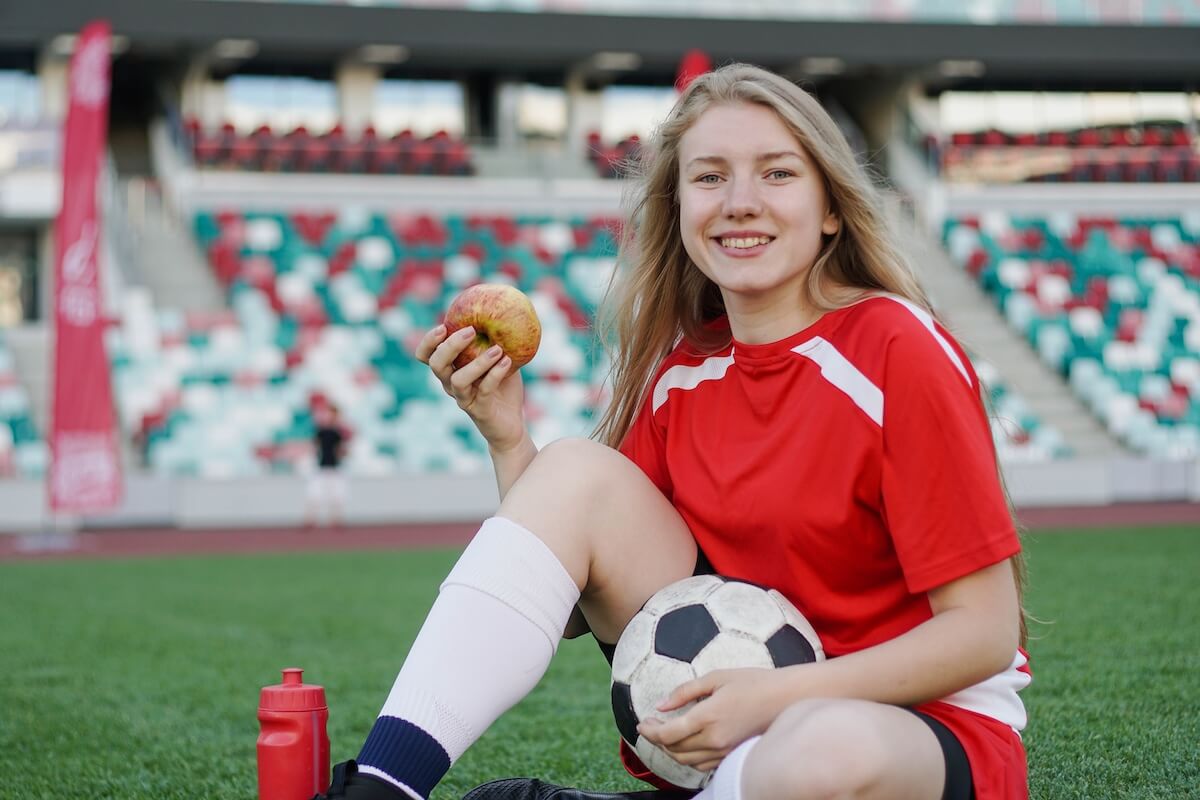Food Tricks and Tools to Treat POTS and EDS
We are sharing some tricks and tools to treat postural orthostatic tachycardia syndrome (POTS) and Ehlers-Danlos Syndrome (EDS). The two conditions often co-occur and share gastrointestinal and circulatory symptoms, thereby increasing the value of medical nutrition therapy in managing both. Laura Cipullo and her team of registered dietitians can provide individualized recommendations to best suit your unique needs. As always, we recommend consulting with your physician prior to implementing these tricks and tools.
Sodium Alginate for Reflux
Sodium alginate has emerged as a promising treatment for easing symptoms of reflux, which is a common digestive complaint among individuals with POTS and EDS1. In contrast to traditionally used medications like proton pump inhibitors (PPIs), histamine-2-receptor agonists (H2RAs), and antacids, this seaweed derivative does not suppress the production of or neutralize stomach acid. Rather, the interaction between the alginate and the acid forms a barrier to protect the esophagus from the stomach acid2. An advantage of this mechanism is its efficacy in treating various types and degrees of reflux (i.e., non-acid reflux, mixed reflux)2. It is also a fast-acting, over the counter solution for unpleasant symptoms of GERD2. In terms of effectiveness, sodium alginate surpasses antacids and placebos but falls short in comparison to PPIs and H2RAs2.
Sodium Tabs (3-4 grams daily)
“The American Heart Association recommends limiting dietary sodium to <2300 mg/day or <1500 mg/day for individuals with heart disease3”; however, certain populations would benefit from a more liberal intake. Both POTS and EDS sufferers experience some form of autonomic nervous system dysfunction4. Most commonly, this presents as heart rate, circulatory, and blood pressure abnormalities4. The rationale for a higher sodium diet is that it increases water retention and blood volume, and therefore, blood pressure4. While this can be problematic for those with hypertension or renal disease4, for instance, it would be favorable for improving circulatory issues due to dysautonomia5. Studies suggest that the ideal sodium intake for individuals with POTS is 8-10 grams per day5. Because many processed and packaged foods already contain high amounts of sodium, supplementation of 3-4 grams daily via sodium tabs should be sufficient in meeting the aforementioned goal. Additional fluid intake is also important (2-3 L/day)5 to help prevent dehydration and nausea.
Low-Histamine Diet
Anyone who has gone outside over the past few weeks up here in the northeast is likely familiar with the sneezing, congestion, itchy eyes, and other bothersome symptoms from the high pollen count. To say we’ve been suffering is an understatement! This immune-mediated reaction is due to histamine, which our bodies release in the presence of allergens and inflammation6. In susceptible individuals, such as those with mast cell activation syndrome (MCAS) or chronic inflammation, the build-up of histamine can produce symptoms all over the body including, but not limited to headaches, shortness of breath, bloating, muscle pain, low blood pressure/changes in blood pressure, itching, hives, and anaphylaxis6. This is also seen in typical food allergies, where the immune system deems the food as harmful and in response, releases histamine. But did you know that certain foods can elicit similar reactions despite the absence of a “true allergy” or intolerance to that specific food? A low-histamine diet eliminates that which contain high amounts of histamine, contain histamine-like substances, or encourage the release of histamine7. In general, high-histamine foods include aged cheeses, fermented foods, and certain fruits and vegetables7. Previously cooked foods also contain high amounts of histamine but have no fear; you can still save your leftovers to enjoy another time provided they are frozen right away, as this greatly slows histamine production. A more extensive list of offenders can be found here7. While POTS and EDS are not inflammatory themselves, research has shown that “24% of EDS patients had an MCAS diagnosis8” and “66% of patients with POTS and EDS had symptoms suggestive of a mast cell disorder8”. It is important to speak with a knowledgeable dietitian, who can provide additional guidance regarding the best approach for implementing a low-histamine diet.
Goat Yogurt Rather Than Cow’s Milk Yogurt
Nowadays, there is a yogurt for everyone: from Greek to skyr to plant-based, each with its own flavor and nutritional profiles. One lesser-known option is goat yogurt. Compared to cow’s milk, goat yogurt contains slightly more calories, protein, vitamins, and minerals9. It is also a viable option for some people who are unable to tolerate cow’s milk due to the different protein composition, lower lactose content, and because it may be easier to digest9. Like cow’s milk yogurt, goat yogurt contains probiotics—live microorganisms that promote a healthy gut microbiome9—and thus, may be particularly beneficial for individuals with POTS and EDS.
Disaccharide Enzymes for Digestion
Our final tool for easing symptoms of POTS and EDS is disaccharide enzymes, or “disaccharidases.” A disaccharide is a type of sugar made up of two monosaccharides (or “simple sugars”). Disaccharidases help the body break down these carbohydrates, specifically the sugars: lactose, maltose, and sucrose, into a more usable and absorbable form10. In their absence, uncomfortable digestive issues such as gas, bloating, and diarrhea occur10. These symptoms are often seen in irritable bowel syndrome (IBS) and therefore, POTS and EDS. A low FODMAP diet, commonly used to address IBS, eliminate lactose; however, this may not be enough for everyone to experience relief. Research suggests that disaccharide enzyme deficiencies are often mistaken for IBS and therefore, underdiagnosed10. To completely eliminate all three disaccharides would be too restrictive given all the foods that contain them. Instead, taking disaccharide enzymes can provide symptom relief without compromising dietary intake and variety10.
References
- Do T, Diamond S, Green C, Warren M. Nutritional implications of patients with dysautonomia and hypermobility syndromes. Current Nutrition Reports. 2021;10(4):324-333. doi:https://doi.org/10.1007/s13668-021-00373-1
- Rossiaky D. Alginates for GERD: Effectiveness, Risks, and FAQ. Healthline. Published July 21, 2023. Accessed May 29, 2024. https://www.healthline.com/health/gerd/alginates-for-gerd#summary
- American Heart Association. How much sodium should I eat per day? www.heart.org. Published November 1, 2021. Accessed May 29, 2024. https://www.heart.org/en/healthy-living/healthy-eating/eat-smart/sodium/how-much-sodium-should-i-eat-per-day
- Dysautonomia. The Ehlers Danlos Society. Accessed May 29, 2024. https://www.ehlers-danlos.com/dysautonomia/#1695800879815-ea23e05f-7ef6
- Vernino S, Bourne KM, Stiles LE, et al. Postural orthostatic tachycardia syndrome (POTS): State of the science and clinical care from a 2019 National Institutes of Health Expert Consensus Meeting – Part 1. Autonomic Neuroscience. 2021;235:102828. doi:https://doi.org/10.1016/j.autneu.2021.102828
- Gatta F. What Is Mast Cell Activation Syndrome? WebMD. Accessed May 31, 2024. https://www.webmd.com/allergies/what-is-mast-cell-activation-syndrome
- The Food List. Histamine Intolerance. https://www.histamineintolerance.org.uk/about/the-food-diary/the-food-list/
- Monaco A, Choi D, Uzun S, Maitland A, Riley B. Association of mast-cell-related conditions with hypermobile syndromes: a review of the literature. Immunologic Research. 2022;70(4):419-431. doi:https://doi.org/10.1007/s12026-022-09280-1
- Qausar Hamed ALKaisy, Jasim M. S. Al-Saadi, Al-Rikabi AK, Altemimi AB, Mohammad Ali Hesarinejad, Tarek Gamal Abedelmaksoud. Exploring the health benefits and functional properties of goat milk proteins. Food Science and Nutrition. 2023;11(10):5641-5656. doi:https://doi.org/10.1002/fsn3.3531
- Viswanathan L, Satish SC Rao. Intestinal Disaccharidase Deficiency in Adults: Evaluation and Treatment. Current Gastroenterology Reports. 2023;25(6):134-139. doi:https://doi.org/10.1007/s11894-023-00870-z








